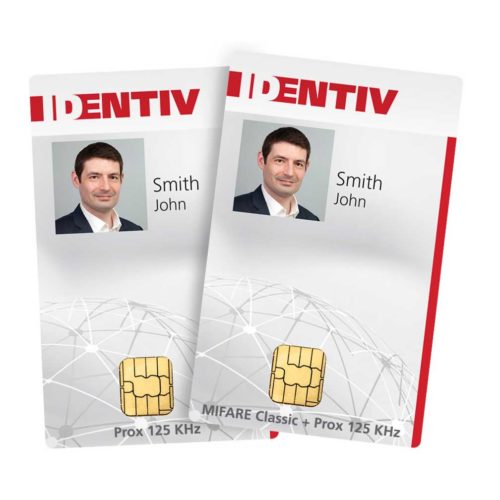A Physical Access Control System (PACS) grants access to employees and contractors who work at or visit a site by electronically authenticating their Personal Identity Verification (PIV) credentials or some other ID card such as a smart card. Although PACSs are Information Technology systems, they must be designed, deployed, and operated in cooperation with Physical Security teams to successfully meet agency mission needs.
Physical access system typically consist of one or multiple components such as gates, locked doors, mantraps, turnstiles, ID cards and a central controller unit.
When physical access is controlled by software, the chip on an access card and an electric lock grants access through software, which should be considered a logical access control. That being said, incorporating biometrics adds another layer to gain entry into a room. This is considered a physical access control. Identity authentication is based on a person’s physical characteristics. The most common physical access controls are used at hospitals, police stations, government offices, data centers, and any area that contains sensitive equipment and/or data.
Physical access is sometimes used in conjunction with logical access to control an individual’s ability to access one or more computer system resources such as a workstation, network, application, or database. A logical access control system requires validation of an individual’s identity through some mechanism such as a personal identification number (PIN), card, biometric, or other token. It has the capability to assign different access privileges to different persons depending on their roles and responsibilities in an organization.
The following table defines common PACS components:
| Component | Description |
|---|---|
| Access point | Entrance point or physical barrier where an employee or contractor interacts with the PACS. Example access points include turnstiles, gates, and locking doors. |
| PIV credential | Federal employees and contractors use Personal Identity Verification (PIV) credentials to physically access federal facilities and logically access federal information systems. |
| Credential reader and keypad | The reader provides power to and reads data from a PIV credential. The reader also sends this data to a control panel to authenticate the PIV credential and request access authorization. Employees and contractors may need to enter a PIN into the keypad and add a biometric, depending on the facility’s security classification and risk levels. |
| Biometric reader | Captures biometric data (for example, face, fingerprint or iris scan) and verifies it against the PIV credential’s biometric data. |
| Control panel | Receives the credential data sent by the reader and verifies its presence in the credential holder data repository. It then makes an access decision and transmits authorization data to the access control server and access point. |
| Access control server | Grants authorization to the employee or contractor requesting access (for example, presenting a PIV credential to a reader). It also registers and enrolls employees and contractors; enrolls and validates credentials; and logs system events. |
| Credential holder data repository |
Contains employee and contractor data and physical access privileges. Control panels use this authoritative data to validate credential data. |
| Auxiliary Systems | Agencies may integrate the PACS with additional facility monitoring systems such as surveillance systems, fire alarm systems, and evacuation systems. |
Related Products
Related Articles
EyeLock Combines Physical and Logical Biometric Access Control in the Latest Version of Its Identity Management Application
NEW YORK, Jan. 13, 2021 /PRNewswire/ -- EyeLock LLC, the leader of iris-based identity authentication solutions, announced today that the latest release of its identity management software application, EyeLock Identity Suite (EIS), now supports highly secure physical and logical access control in a
Versasec and Identiv Announce Technology Partnership
NEW YORK And STOCKHOLM, July 17, 2018 -- Versasec, the leader in smart card management systems, today announced its technology partnership with Identiv, a global provider of physical security and secure identification solutions. With the combined strength of Identiv's uTrust SmartID Secure Access
Observables and ZKTeco USA Announce Premises Management and Biometric Access Control Integration
LAS VEGAS, April 3, 2018 /PRNewswire/ -- April 11-13 – ISC West – Booth #32086 – Observables, Inc., the leader in Premises Management Services announces a Joint Marketing, Reseller and Development agreement with ZKTeco USA, producer of the most comprehensive access control platform. The joint venture
Identiv’s uTrust Sense Minidriver Smart Cards is the New Generation of Logical and Physical Access Control
Santa Ana, January 30, 2018 - Identiv’s new uTrust Sense Minidriver Smart Cards are the next generation of smart card solutions for logical access and physical access control. From accessing Windows®-enabled computers to opening doors, these secure cards incorporate an
Identiv Expands Global Distribution of Smart Card Readers and Credentials in Partnership with Leading Saudi Arabian Security Services Company
FREMONT, Calif., November 21, 2017 — Identiv, Inc. (NASDAQ: INVE) today announced the company has entered into a distribution partnership with Development Trading Company (DTC), the first and leading security printing and services company in Saudi Arabia. In partnership with DTC, Identiv will bring
Identiv and Zwipe Partner to Provide Biometric Access Control Card Services
FREMONT, Calif., September 14, 2017 — Identiv, Inc. (NASDAQ: INVE) today announced that the company has partnered with biometric technology company Zwipe for access control card formatting services. Identiv’s U.S.-based card service bureau is programming the radio frequency identification (RFID) chips in


